Small Kitchen Ideas: Turn Your Small Space into a Masterpiece
Table of Contents
Maximizing small kitchen ideas revolutionizes how your small space functions and feels in your daily life. Whether you’re dealing with a tiny kitchen in a small apartment or a modest suburban cooking area, smart design choices maximize your kitchen’s spaciousness while enhancing both functionality and aesthetics. The secret lies in understanding that limitations breed creativity, and with the right approach, your small kitchen can become the heart of your home.
Modern homeowners are increasingly moving toward smaller living spaces, making small kitchen design more relevant than ever. According to recent housing trends, 68% of new apartments have kitchens that are less than 150 square feet, yet these spaces must accommodate all the cooking, storage, and socializing functions of their larger counterparts. This challenge has led to innovative design solutions that optimize every square inch while maintaining style and functionality.
The beauty of small kitchen design lies in its ability to force you to make thoughtful choices. Every element should have its proper place, resulting in cleaner, more efficient spaces that often outperform larger, poorly planned kitchens. From vertical storage solutions to multi-use furniture, small kitchen ideas have evolved into a sophisticated design system that prioritizes both form and function.
Popular Kitchen Designs That Optimize Small Spaces
Hallway Kitchen: Linear Efficiency
The hallway kitchen design remains one of the most effective small kitchen ideas for tight spaces. This layout features two parallel surfaces with a hallway between them, creating an efficient work triangle. The secret to hallway kitchen success lies in maintaining a suitable aisle width (at least 42 inches) while maximizing storage space on both sides.
Professional designers recommend placing the sink and dishwasher on one side and the refrigerator and stove on the other. This arrangement reduces clutter while maintaining efficient workflow. Light-colored cabinetry and reflective surfaces can prevent a kitchen from feeling like a tunnel, while strategic lighting brightens the entire space.
L-Shaped Design: Optimizing Corners
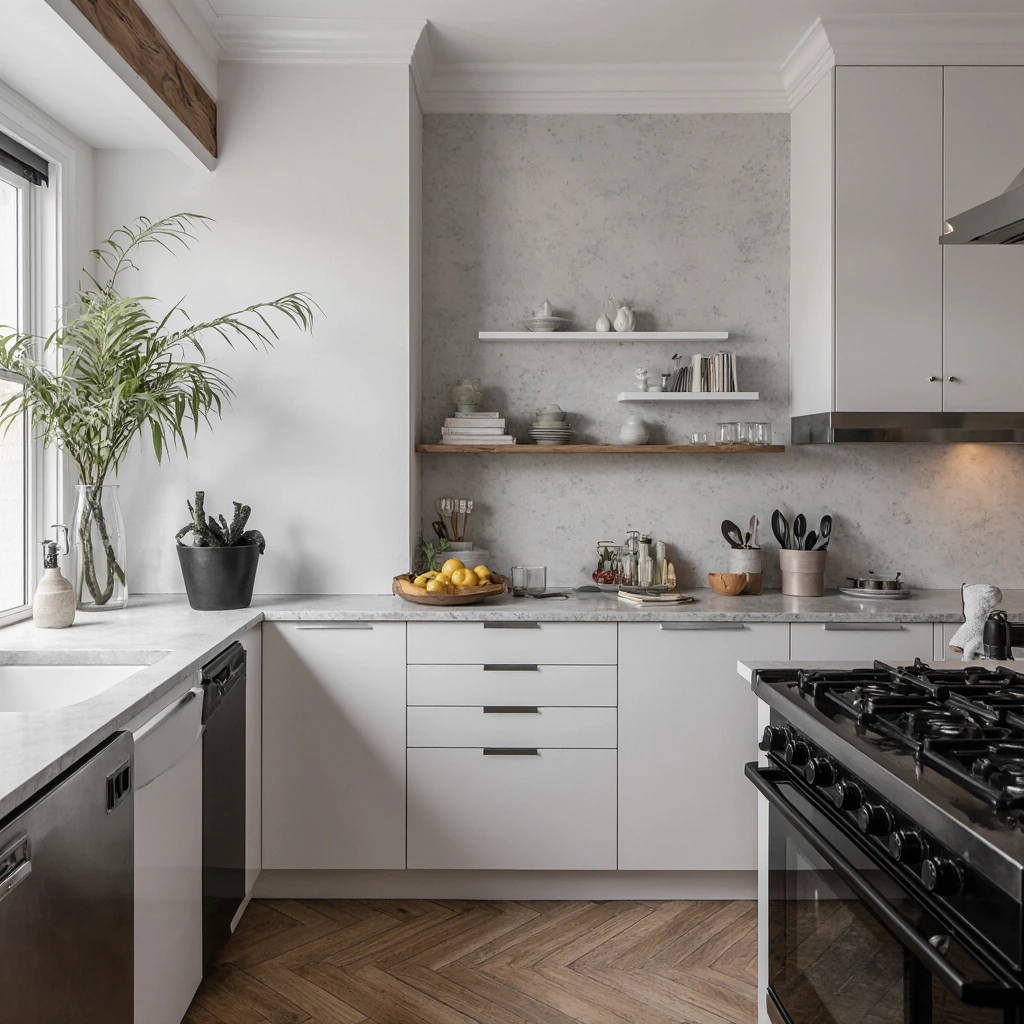
L-shaped kitchens offer excellent versatility for small spaces, especially in open-plan homes. This design utilizes two adjacent walls, creating natural spaces for prep, cooking, and cleaning. Corner areas often present storage challenges, but modern solutions like lazy Susan shelving, pull-out drawers, and corner cabinets with curved doors enhance accessibility.
The open end of an L-shaped kitchen provides opportunities for bar seating or connecting to dining areas, making it ideal for entertaining. Consider installing a kitchen island or peninsula if space allows, to add storage and workspace without overloading the room.
One-Wall Kitchen: Streamlined Simplicity
One-wall kitchens represent the ultimate in space efficiency, with all appliances and storage on one wall. This design is ideal for studio apartments or open-plan living spaces. Success depends on maximizing vertical storage space and carefully selecting appliances.
Appropriately deep appliances maintain a streamlined look, while open shelving creates a sense of spaciousness. The main challenge is maintaining the work triangle within a linear space, which requires strategically positioning the sink between the refrigerator and the cooktop.
Smart Storage and Organization Solutions
Maximizing Vertical Storage
One of the most effective small kitchen ideas is utilizing every inch of vertical space. Cabinet height should extend to the ceiling, even if upper shelves require a ladder to reach. These elevated spaces are ideal for storing seasonal items, special occasion dishes, and rarely used appliances.
Installing pull-out shelving systems makes high storage easier, while built-in cabinet organizers improve space efficiency. Consider the following vertical storage solutions:
- Floor-to-ceiling pantry cabinets with built-in organizers
- Magnetic spice racks mounted on cabinet doors or refrigerator sides
- Hanging utensil racks that double as ceiling design elements
- Wall-mounted knife strips and kitchen utensil holders
- Cutting boards above the sink provide temporary workspace
Versatile Furniture and Fixtures
Stylish small kitchen ideas often include versatile furniture. Kitchen islands on wheels provide extra prep space when needed and can be moved for entertaining. High tables serve as a dining surface and additional workspace, while footstools provide seating and stashing of kitchen linens.
Cabinet doors offer often-overlooked storage opportunities. Built-in door mounts can accommodate cutting boards, baking sheets, cleaning supplies, and spices. Custom-designed drawers utilize the space beneath lower cabinets to store flat items like cookie sheets and serving trays.
Hidden Storage Solutions
Hidden storage maintains clean lines while maximizing capacity. Pull-out kitchen cabinets fit into tight spaces between appliances, while appliance racks conceal countertop clutter behind cabinet doors. Consider installing charging stations inside drawers to eliminate countertop cable clutter.
Under-cabinet lighting not only improves visibility but can also integrate USB charging ports and electrical outlets. This dual-function approach exemplifies efficient design thinking in small kitchens.
Color Schemes and Backsplash Ideas for Small Kitchens
Light and Bright Color Combinations
Color psychology plays a crucial role in small kitchen ideas, as light colors create the illusion of a larger space. White is still the gold standard for small kitchens, but variations like cream, soft gray, and pale blue add interest while maintaining brightness. Two-tone cabinet designs can add a touch of beauty without overwhelming cramped spaces.
Consider these successful color combinations for small kitchens:
- White upper cabinets with light gray lower cabinets
- Cream cabinets with gray-green accents
- Soft blue cabinets with white countertops and backsplash
- Natural wood tones with white walls and fixtures
Strategic Use of Dark Colors
While light colors dominate small kitchen designs, strategic dark accents can add depth and elegance. Dark blue islands, black metal appliances, or a charcoal backsplash create focal points without shrinking the space. The key is balance—use dark colors sparingly and pair them with subdued lighting.
The Impact of Backsplash Design
Backsplashes add significant visual impact to small kitchens. Large-format tiles minimize grout lines, making surfaces appear larger and easier to clean. Subway tiles remain popular for their timeless appeal and light-reflecting properties. Glass tiles add sparkle and depth, while mirrored backsplashes can double the visual space.
Consider extending the backsplash to the ceiling in small kitchens. This technique eliminates the visual gaps caused by partial backsplashes, making walls appear taller and more cohesive.
Practical Lighting Solutions and Atmosphere
Layered Lighting Style
Effective small kitchen ideas incorporate multiple types of lighting to create a functional and atmospheric atmosphere. Ambient lighting provides overall illumination, task lighting focuses on work areas, and accent lighting adds a touch of beauty. This layered approach prevents harsh shadows and adds depth to small spaces.
Recessed ceiling lights provide ambient lighting without taking up visual space. LED strips under cabinets provide ideal lighting for food preparation, while adding a modern aesthetic. Pendant lights above islands or peninsulas serve as both functional and decorative lighting.
Make the Most of Natural Light
Natural light makes any small kitchen appear larger and more inviting. Enhance existing window space with simple window shades, or opt for top-down and bottom-up window shades, which provide privacy and allow light in. Light-colored window treatments reflect more light into the space.
If privacy isn’t a concern, consider eliminating window shades altogether. Clean, unobstructed windows enhance natural light and create visual connections with the outdoors, effectively expanding the kitchen’s boundaries.
Strategically Place Mirrors
Mirrors are an underutilized element in small kitchen ideas. A well-placed mirror can reflect natural and artificial light throughout the space, creating the illusion of extra space. Consider using mirrored backsplashes, cabinet doors, or strategically placed decorative mirrors.
Affordable Kitchen Design Updates
Cabinet Renovation Techniques
Complete cabinet replacement represents the largest expense in kitchen renovations, but many economical alternatives transform old cabinets into stylish ones. Professional cabinet refinishing is much less expensive than replacement, with impressive results. Choose light, neutral colors that won’t tarnish quickly.
Replacing cabinet doors offers a middle ground. New doors and drawer fronts can completely transform a kitchen while preserving the existing cabinetry. This approach yields great results, especially when the cabinetry’s design is intact but its aesthetics need updating.
Hardware and Fitting Updates
New cabinet hardware represents one of the most cost-effective kitchen upgrades. Modern handles can transform traditional cabinets into contemporary pieces of art. Consider finishes of brushed gold, matte black, or polished chrome to complement your overall design.
Replacing faucets offers another high-impact and cost-effective upgrade. Modern faucets with pull-down sprays improve functionality and add a stylish touch. Choose finishes that coordinate with cabinetry for a cohesive look.
DIY Backsplash Tile Installation
Many backsplash materials allow for do-it-yourself installation, significantly reducing project costs. The quality and appearance of peel-and-stick backsplashes have improved dramatically, offering a realistic look of stone and ceramic. Subway tiles remain popular due to their classic appeal and relative ease of installation.
Paint is the most convenient option for backsplashes. Specially formulated kitchen paints resist moisture and stains, with unlimited color options. Consider using painter’s tape to create geometric patterns or feature walls.
Common Mistakes and How to Avoid Them
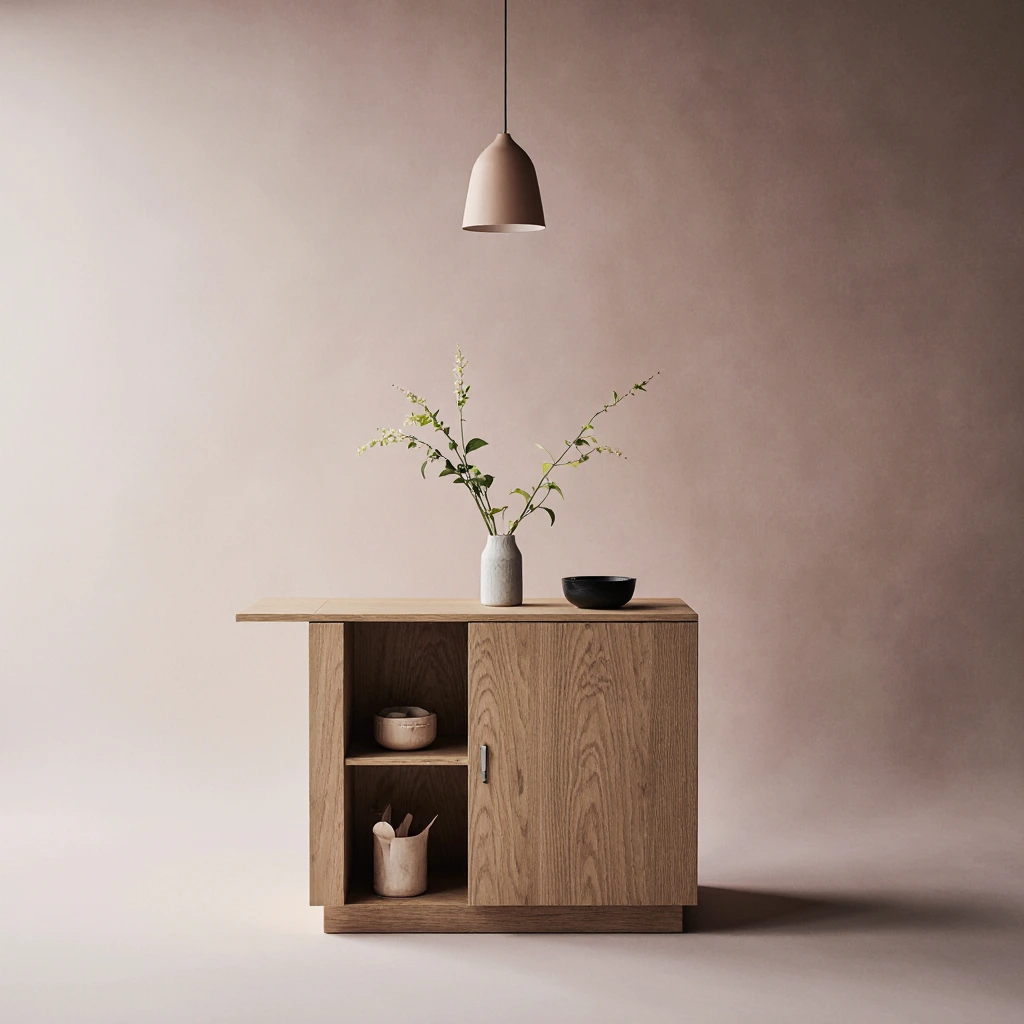
Proportional Planning Mistakes
One of the most common mistakes in designing small kitchens is choosing fixtures and appliances that overwhelm the space. Large islands, bulky range hoods, and bulky appliances can make small kitchens appear cramped and unwieldy. Always measure carefully and consider the proportions between items.
Choose built-in appliances designed specifically for small spaces. Medium-depth refrigerators maintain a streamlined display, while small appliances offer full functionality in smaller spaces. Built-in appliances hidden behind cabinet panels create a harmonious look in tight spaces.
Improper Storage Planning
Failing to maximize storage potential is another common mistake. Every small kitchen requires more storage space than it initially appears. Plan to store not only dishes and cookware, but also small appliances, cleaning supplies, and food. Consider future needs when planning storage solutions.
Avoid single-function storage solutions and opt for multi-purpose options. Drawers with built-in organizers adapt better to changing needs than fixed shelves. Pull-out systems make deep cabinets more functional while maintaining easy access.
Lighting Mistakes
Inadequate or poorly planned lighting can make small kitchens feel cramped and uncomfortable. Avoid relying solely on overhead lighting, which creates harsh shadows and unflattering light. Plan lighting for all work surfaces and consider the color temperature of LED bulbs.
Warm white LED bulbs (2700-3000 Kelvin) create a warm atmosphere, while cool white options (3500-4000 Kelvin) provide better illumination. Dimmer switches allow lighting to be adjusted throughout the day, adapting to different activities and moods.
Turn Your Small Kitchen into a Design Success Story
Small kitchen ideas have evolved beyond simple space-saving tricks to encompass comprehensive design philosophies that prioritize beauty and function. The most successful small kitchens recognize their limitations and view them as creative opportunities, resulting in spaces that often surpass larger kitchens in efficiency and style.
Remember, designing an effective small kitchen requires patience and planning. Take the time to assess your specific needs, lifestyle, and aesthetic preferences before making important decisions. Consider consulting design experts who can offer valuable insights and help avoid costly mistakes.
Investing in a thoughtful small kitchen design pays off in daily satisfaction and home value. A well-designed small kitchen becomes a source of pride, not frustration, proving that space constraints don’t have to compromise style or function.
What small kitchen design challenges do you face in your home? Share your renovation experiences, budget-friendly finds, or innovative storage solutions in the comments below. Your ideas may inspire another homeowner to transform their small kitchen into the perfect one.
Best Amazon Picks :
FAQs
Q: What is the minimum size for a practical small kitchen?
A: Most building codes require kitchens to be at least 70 square feet, but practical small kitchens can fit in as small as 50 to 60 square feet with proper planning. The key lies in efficient layout and smart storage solutions, rather than overall square footage.
Q: How can I make my small kitchen appear larger without major renovations?
A: Focus on light colors, adequate lighting, and reflective surfaces. Remove upper cabinet doors to create open shelving, use glass-fronted cabinets, and ensure your countertops are organized. Tightly positioned mirrors can create a sense of spaciousness.
Q: Are kitchen islands practical in small kitchens?
A: Kitchen islands work well in small spaces if they offer sufficient space (at least 36 inches, preferably 42 inches) on all sides. Consider using mobile islands or narrow designs that provide storage and work space without overwhelming the room.
Q: What are the essential and optional appliances in small kitchens?
A: Essential appliances include a refrigerator, stove/stove, and sink. Dishwashers, while highly desirable, may be optional depending on the size of the home. Consider built-in appliances like microwaves and convection ovens or refrigerator and freezer drawers to maximize their functionality.
Q: How do I choose the right cabinet color for a small kitchen?
A: Light and neutral colors are best for visually expanding space. White, cream, light gray, and soft pastels reflect light and create a sense of spaciousness. If you prefer dark colors, use them sparingly as accent elements rather than as dominant elements.
Q: What is the best flooring for small kitchens?
A: Large-format tiles, wide-plank flooring, or continuous flooring that extends into adjacent rooms can make small kitchens appear larger. Light colors and subtle pattern contrast help maintain a flowing and spacious feel.
Q: How do I add a personal touch to my small kitchen without overwhelming the space?
A: Focus on one or two standout elements instead of multiple competing elements. Consider colorful backsplashes, unique lighting fixtures, unique cabinetry, or a single feature wall. Plants, artwork, and textiles add a personal touch without a permanent commitment.

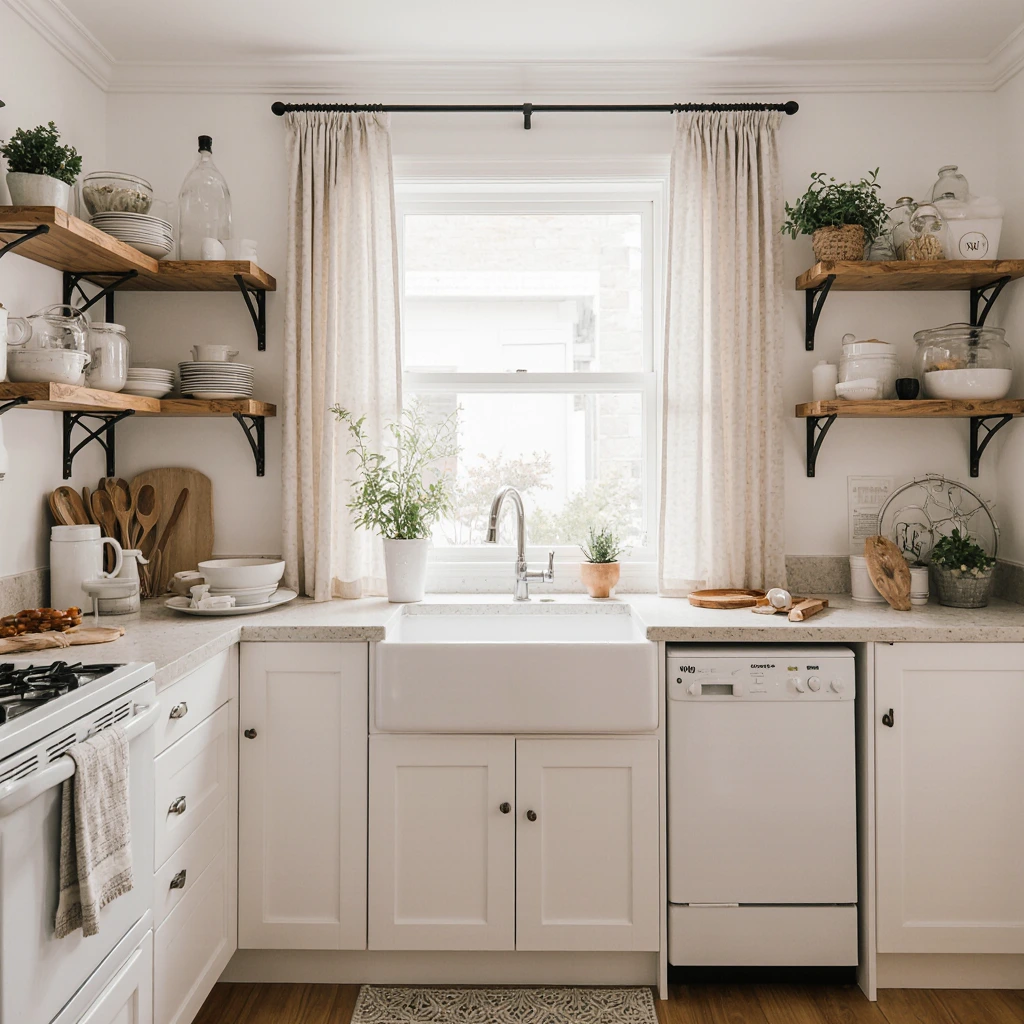
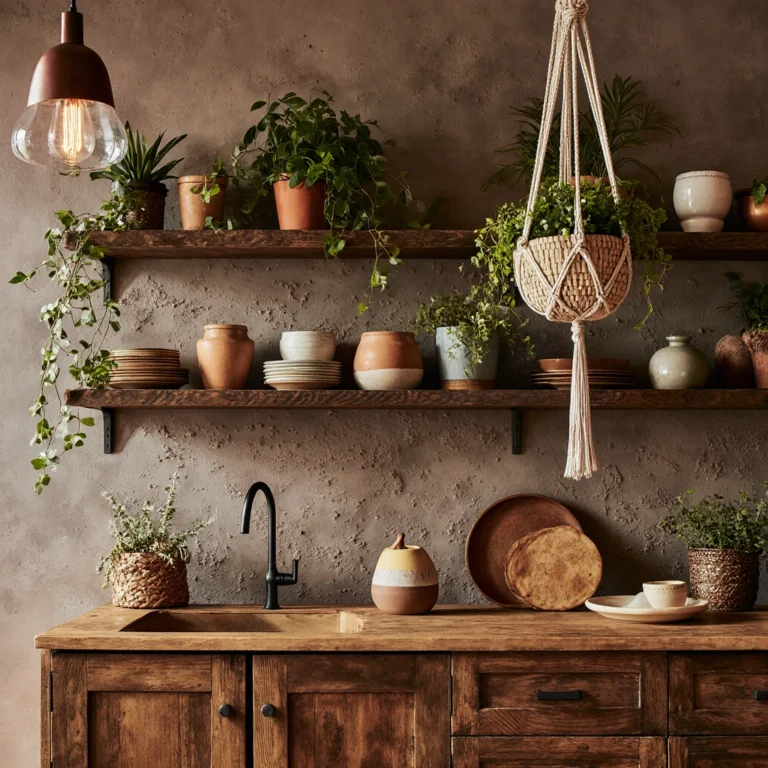
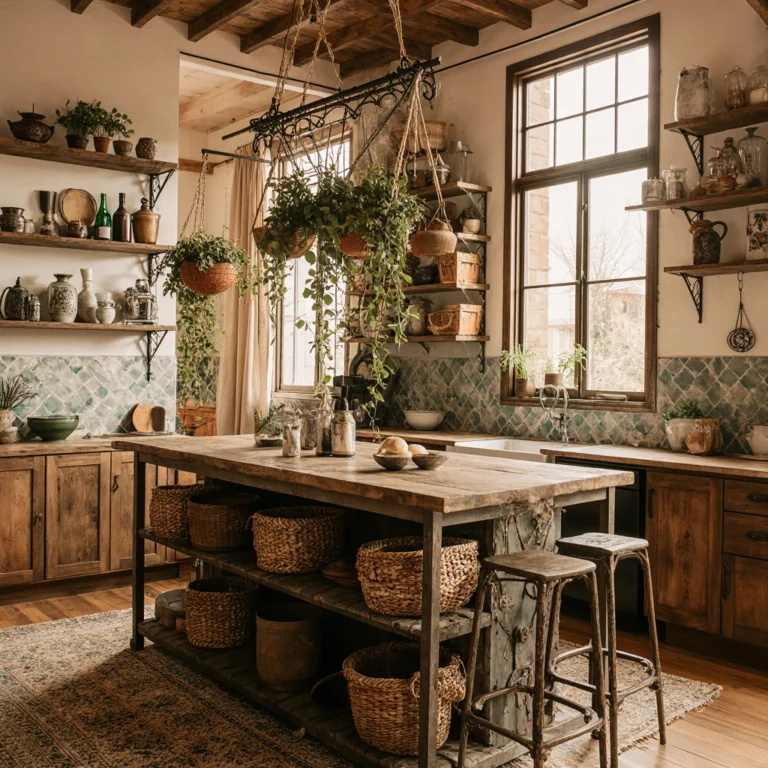
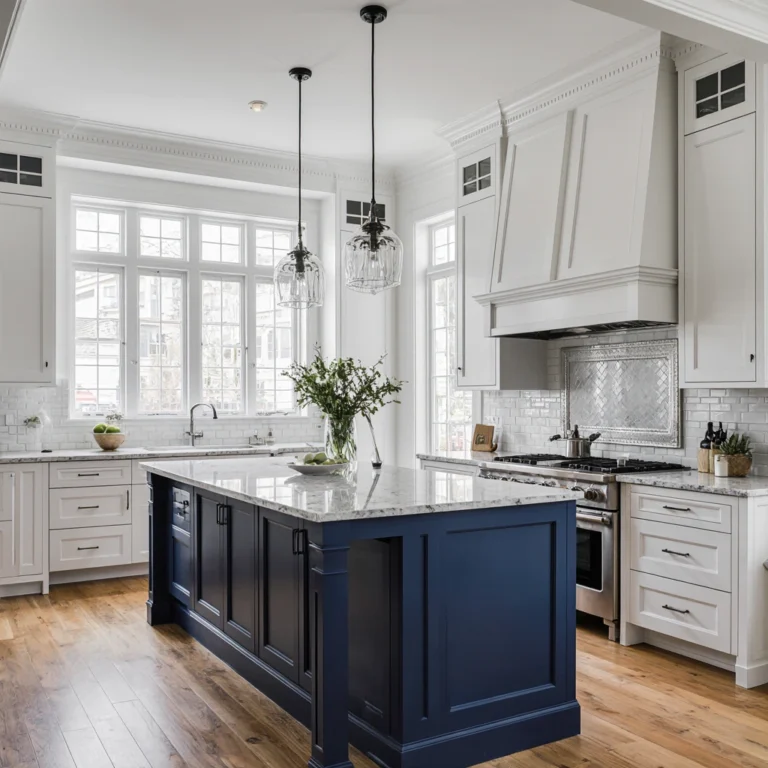
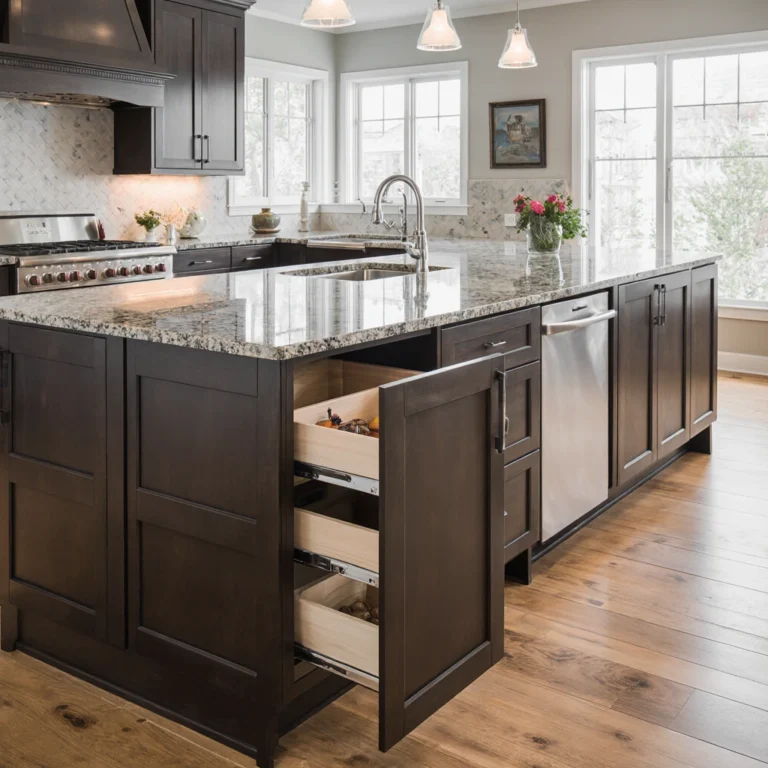
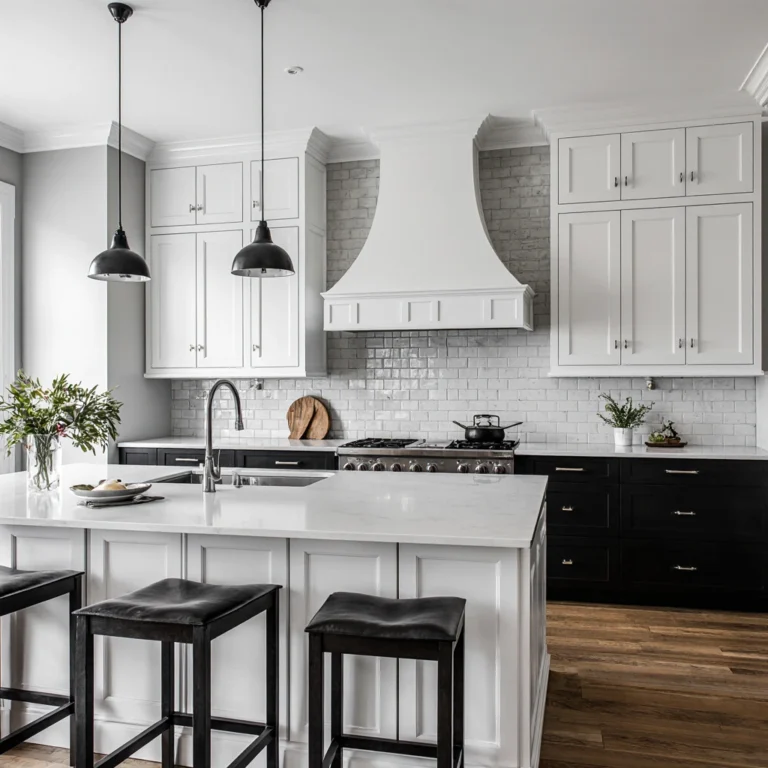
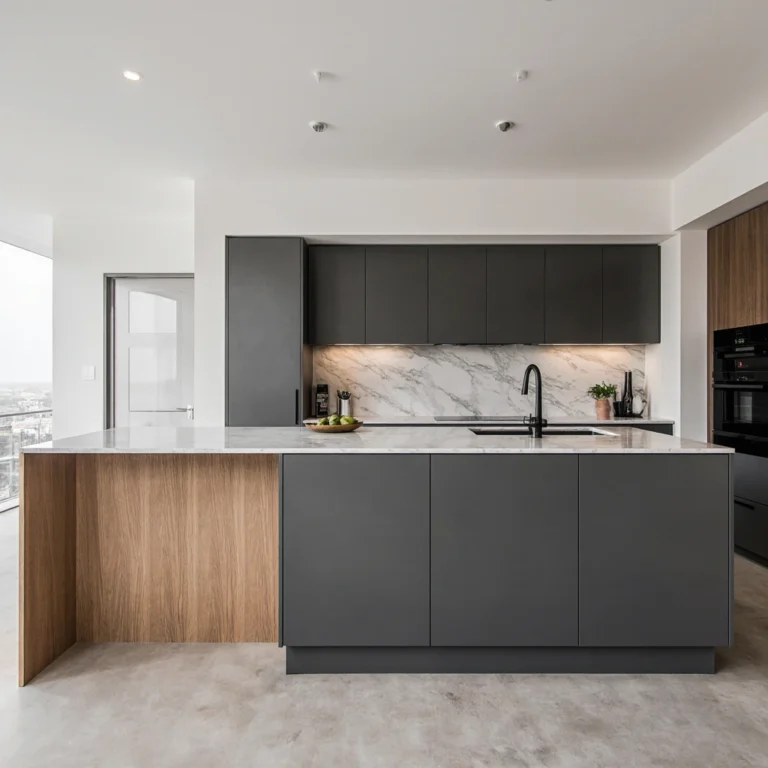
3 Comments
Comments are closed.